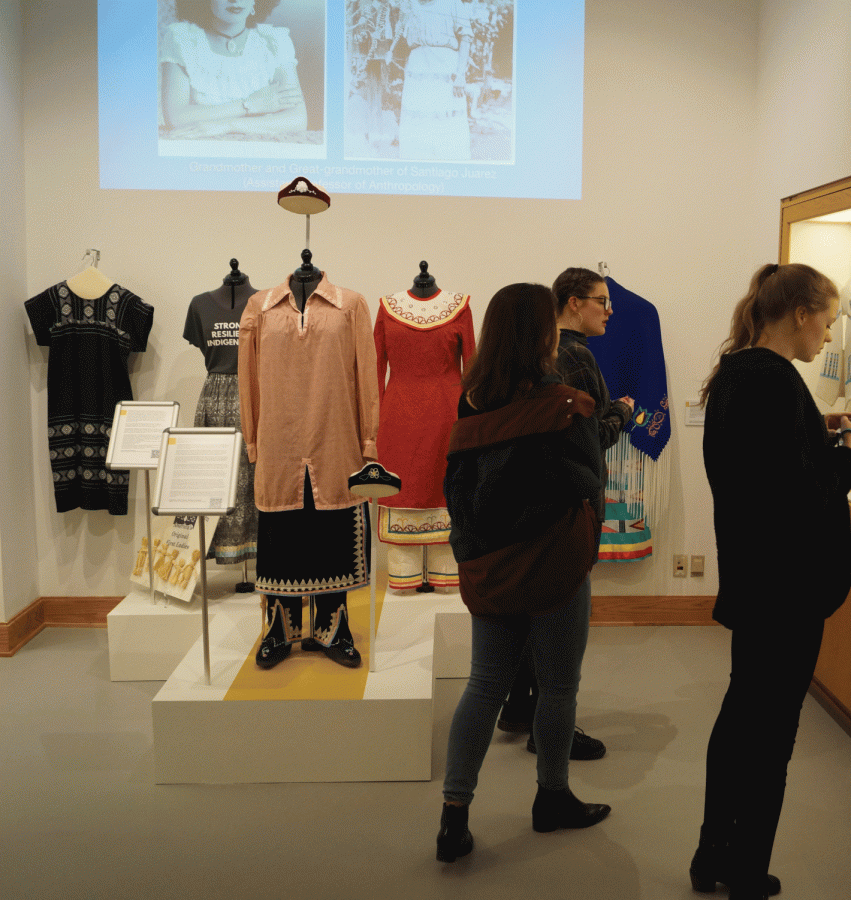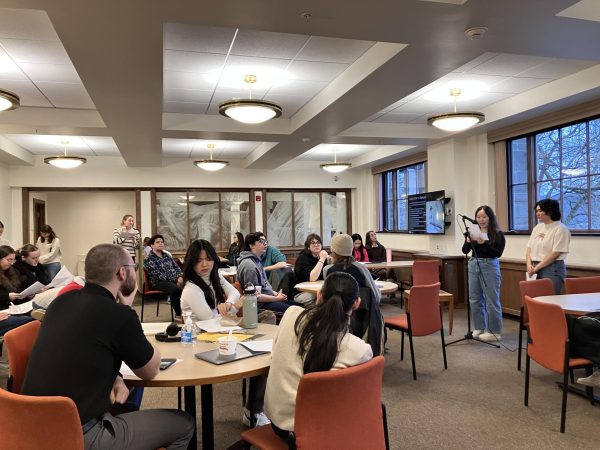“Not a Costume” Features Items from Indigenous Community Members
The Longyear Museum of Anthropology opened its doors for its new exhibit titled “Not a Costume” on September 27. The displays showcased beautiful clothing and jewelry of all shapes, sizes and colors. John Logan, a member of the Oneida tribe, welcomed those in attendance with a greeting spoken in the language of the Oneida. For Colgate and members of surrounding communities, this exhibition is impressive, as all of the items displayed were donated by Colgate faculty, alumni, staff and students.
“Not a Costume” is based on the recent “My Culture is Not A Costume” movement started by various ethnic groups and indigenous peoples to protest the selling of Halloween costumes that mock and appropriate their cultures. According to the exhibit, “indigenous” refers to anyone who “identifies as indigenous from the Western Hemisphere (encompassing the Americas and extending into Oceania).” The display also aims to “include the many indigenous peoples [that] have been disconnected from their communities through colonial practices such as forced relocation, the removal of children from their families and criminalization of traditional practices.”
The exhibition displayed clothing and jewelry from the indigenous people of the Colgate community. The exhibition is unique in the way that it presents these pieces; the curator did not make the display labels, but those who donated pieces submitted stories explaining the items and their lives as indigenous people in and outside of Colgate.
One story by Robert Hunter explains the history of a vest displayed in a case. Hunter brought his vest to school, even though his mother told him not to wear it in public. He thought it would be cool and wore it around other kids, who bullied him for it. When Hunter returned home and told his mother, he believed she would be mad at him. Instead, Hunter’s mother held him in her arms and cried, saying “now you know why it wasn’t meant to be worn around here.”
The community contribution provides a distinct lens that bypasses the curatorial view and allows the viewer to connect directly with the pieces and the history behind them. The importance of a collaboration of this caliber wasn’t missed by those involved and in attendance.
“The museum isn’t telling people what the objects should say,” curator Christy DeLair said. “The clothing that people donated have the voice instead.”
“The objects [on display] are outside the realm of the curatorial purview,” preparator for Picker Art Gallery Scott Lewis said. “Having the community involved shortens the length between the objects and the viewer and that’s a really refreshing take.”
The exhibition is especially important considering this year’s bicentennial celebration. As Colgate celebrates its 200 year anniversary, indigenous members of the Colgate community want to make their voices heard.
“We’re here!” DeLair said at the end of her speech, throwing her fist into the air excitedly.
“Not a Costume” will be on display in the Longyear Museum of Anthropology until December 16.
Contact Emily Karavitch at [email protected].







